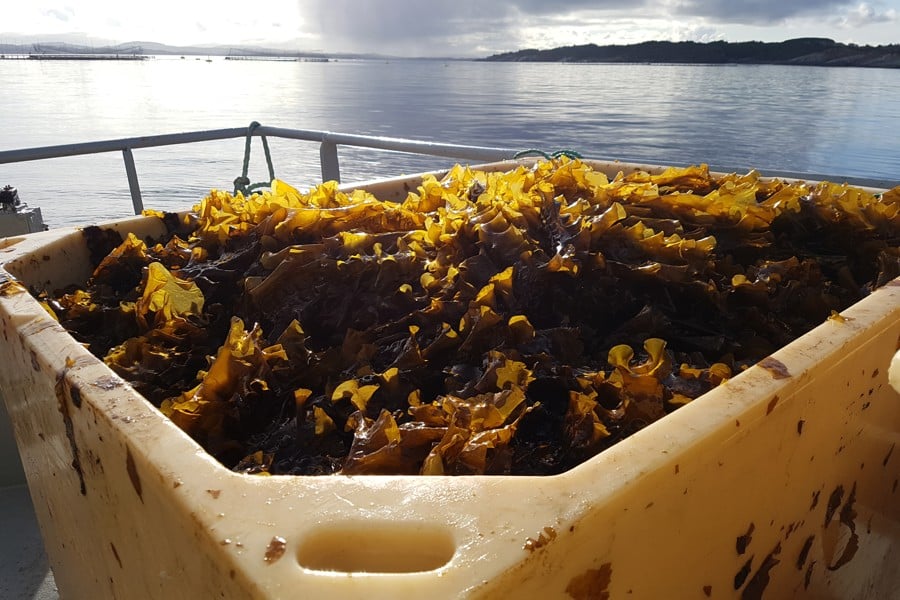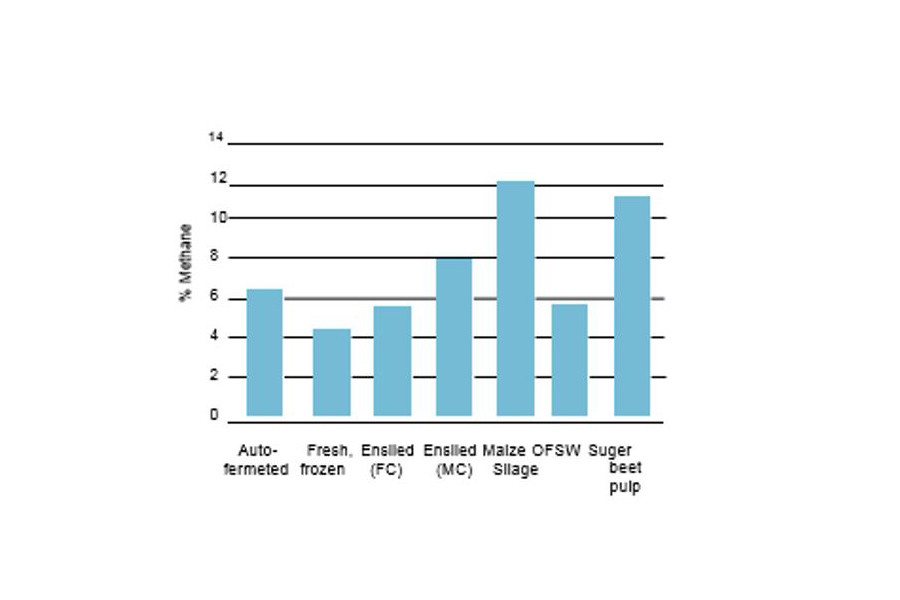-
SEARCH
Type your search in the field above

Producing sugar kelp is a very efficient way of binding CO2 already dissolved in the sea. Farming sugar kelp does not require any input of freshwater, fertiliser, pesticides or land. The plant captures the nitrogen, phosphorus and carbon (as CO2) directly from the ocean. On average, 1.000 kg (wet weight) sugar kelp contains 26 kg carbon equal to 100 kg CO2 – which is higher than the same volume for wood.
Ocean Forest AS is an R&D company, and the Group has a 50% share in this company together with NGO Bellona Holding AS. The company is focusing on the production of low trophic species such as macro algae, blue mussels and polychaeta.

PRODUCTION OF BLUE MUSSEL MEAL
Ocean Forest AS has focus on the production of blue mussels, not for human consumption but mainly as a source of marine protein in feed. We have conducted a series of growth studies with Atlantic salmon demonstrating that blue mussel is an excellent fishmeal replacement.
The challenge has been to produce a blue mussel meal free of shell fractions on an industrial scale. We have now ordered special equipment that will enable us to separate the meat from the shell on an industrially efficient scale. In addition, blue mussels will also contribute to cuts in CO2 emissions.
MORE EFFICIENT FEED CONTROL
The Group has a constant focus on the footprint from our fish farming activities. Faeces and uneaten feed on the seabed beneath our cages can represent a local undesired impact on the environment. This issue is addressed with an increased focus on feed control but also how to optimize the raw material used and the amount and physical quality of the faeces.
Ocean Forest focuses on the organic matter that reaches the seabed and how we can increase the turnover of this material. Our focus is on polychaeta; how to support the establishment of an active and heathy community of this species and how to harvest the surplus for use in e.g. fish feed for other species than salmon.
In collaboration with the Institute of Marine Research in Norway and the University of Wageningen, we have in recent years conducted a series of studies indicating the turnover rate and species present. We have developed a “polychaeta vacuum cleaner” for harvesting and one of our employees is now studying in detail these challenges in a PhD programme with the Institute of Marine Research/University of Bergen.
NEW RAW MATERIAL FOR FEED
The Group has a major ongoing programme for developing new innovative raw material for fish feed. Historically, Lerøy has been a prime mover regarding the use of Omega-3 fatty acids produced from microalgae to increase the level of Omega-3 in our feed compared to industry standard, and for the introduction of Camelina oil and the ban on ethoxyquin. Last year, we were the first company to start using insect meal in all our freshwater feed delivered by one of our feed suppliers.
Today, we buy the full volume of insect meal the producer can produce. We are also involved in very interesting projects relating to blue mussel meal and seaweed in salmon feed. Both projects are part of a major EU-supported project – “Holofood”, involving a series of issues, such as feed utilisation and retention, growth performance, fish and gut health.
Methane reduction with sugar kelp
The Group is also delivering sugar kelp to an exciting project in Denmark. In the project, they mix sugar kelp with feed for cows. Compared with ordinary diets with normal cow feed, the project shows that this mixture provides a 50% reduction in the methane emissions from the cows. Fermented sugar kelp in feed also proved successful.
Methane concentration from pure sugar kelp feed, maize silage and sugar beet pulp fermented.

While the use of antibiotics is almost non-existent in Norwegian fish farming, it is a major problem in production of red meat. Here too, sugar kelp can be helpful. The trials in Denmark show that sugar kelp in pig feed, helps with intestinal health and reduces the need for antibiotics.
Lerøy Sjøtroll has installed the world's first collection system for sludge in fish cages.
In collaboration with technology companies Lerøy Sjøtroll developed a completely new sludge collection technology to remove natural waste substances, such as feed residues and faeces, from fish cages.
The natural ecosystem on the seabed benefits from a little discharge of organic materials from the cages, it acts as fertiliser. The problem arises when the amount of sludge exceeds nature's own tolerance, which can happen in threshold fjords with low oxygen levels.
The sludge from the fish is collected in a fine-mesh groove installed at the bottom of the cage. It is then pumped up through a filtration system and into a tank located on the surface. The sludge is then transported away from the facilities in boats. The sludge is then converted into biogas.
The sludge contains resources that can be fed back into the value chain. Exciting projects range from soil improvement, gas production, extraction of minerals and production of larvae and insects.
Lerøy Sjøtroll has sludge collection on 2 farm locations.